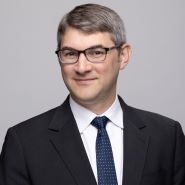Pitfalls of Appealing an Improper Claim Interpretation
- May 23, 2012
- Blog Post
Associated People
A recent Board of Patent Appeals and Interferences (BPAI) decision, Ex parte CHARLES J. COHEN et al. (Appeal 2010-009167, in application serial no. 11/412,252, decision issued May 17, 2012), for which the Final Rejection was affirmed, provides a lesson about ensuring that claims are in the best form for appeal before taking up an appeal.
Claim 8 of the 11/412,252 application (herein ‘252 application) is directed to a method of behavior recognition which comprised the steps of “representing the body of the subject as a plurality of connected links” and “determining the dynamic motion of the body, if any, by monitoring the position of the links in space as a function of time.”
In the Final rejection, the Examiner took the position that the term “links” corresponded to a plurality of x-y coordinates described in the cited reference Nguyen. In response, the Applicants filed an appeal and traversed this position asserting that “based upon the disclosure of Nguyen cited by the Examiner…it is evident that the system and method of Nguyen are based upon coordinates (i.e., x, y) and not "a plurality of interconnected links.”
In the Decision, the Board asserted that “an allegation that the Nguyen “coordinates” are not “links” is not responsive to the rejection that is before us. As made plain by the Examiner (e.g., Ans. at 6-7), the “links” in the reference are not merely the x-y coordinates. The “links” are the parts of a person that correspond to a plurality of x-y coordinates. We agree with the Examiner that the broadest reasonable interpretation of the term “links” in light of the Specification includes the representation of body parts described by the reference.” Thus, the Board interpreted the term “links” as “parts of a person that correspond to the plurality of x-y coordinates.”
One lesson that can be learned from this decision is that appealing a Final rejection based primarily on claim construction may be unadvisable when no backup position is provided. Specifically, if the Applicants had provided a dependent claim which further defined the term “links”, thereby more clearly defining over the citedNguyen reference, it may have been possible to receive a reversal-in-part from the Board, assuming that such a dependent claim was also rejected by the Examiner. Instead, the Applicants provided no such backup position and the Board determined that the Examiner’s broad interpretation of the claim term “links” was justified and affirmed the Examiner.
Another interesting aspect of this decision is that the Board, in passing, also noted that the claims have an issue with §101, citing the CyberSource Corp. v. Retail Decisions, Inc., 654 F.3d 1366, 1372-73 (Fed. Cir. 2011) case in support. This case, in effect, stands for the proposition that claim is drawn to an abstract idea when the method steps can be performed in the human mind, or by using a pen and paper. This issue could have likely been addressed by ensuring that a computing element was appropriately incorporated into method Claim 8. Alternatively, a dependent claim could have been added as a backup position which appropriately incorporated such a computing element.
Thus, when considering an appeal, it is important to consider whether a backup position is available and to consider whether proceeding with another round of prosecution in order to ensure that the claims are in the best form for appeal may be worthwhile.










 Counseling & Strategic Advice
Counseling & Strategic Advice IP Transactions
IP Transactions Litigation
Litigation PTAB Proceedings
PTAB Proceedings Start-Up
Start-Up Technology Transfer
Technology Transfer Trademark & Designs
Trademark & Designs U.S. Patent Procurement (Application Drafting & Prosecution)
U.S. Patent Procurement (Application Drafting & Prosecution)








